
Pedro Joaquín Chamorro Alfaro was the President of Nicaragua from 1 March 1875 to 1 March 1879 and a member of the conservative dominant oligarchy Chamorro family.

Igúzquiza is a town and municipality located in the province and autonomous community of Navarre, northern Spain. Igúzquiza is 4 km from Estella and 50.03 km from the capital of the community, Pamplona. It covers an area of 18.02 km² and Its population in 2023 was 301 inhabitants.

Los Chiles is a canton in the Alajuela province of Costa Rica.
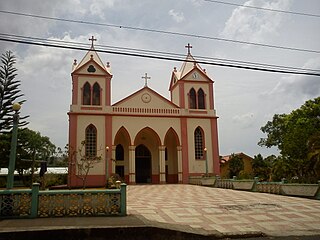
San Mateo is a canton in the Alajuela province of Costa Rica. The head city is in San Mateo district.
Upala is a canton in the Alajuela province of Costa Rica. The head city is in Upala district.
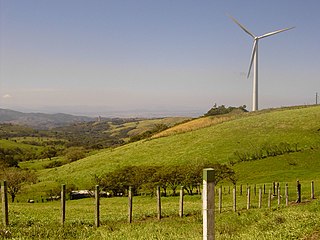
Tilarán is a canton in the Guanacaste province of Costa Rica. The head city is in Tilarán district.

José Antonio Lacayo de Briones y Palacios (1679–1756) was a Spanish "intendant" or "intendente" who held the position of governor in two countries in Central America during the Spanish colonial period. He was Governor of Costa Rica from 1713 to 1717 and Governor of Nicaragua from 1740 to 1745. He also held the post of Commander in Chief of the Army and strengthened the defenses of these two countries against foreign invasion.

Medrano is a Spanish surname of Basque origin that means "abundance, to grow, to prosper, or to improve." It is a surname of high nobility established in the old Kingdoms of Navarre, Aragon, Castile, France, etc. They are all descendants of their progenitor, Prince Andrés Vélaz de Medrano.
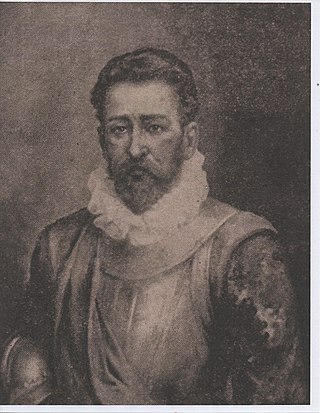
Juan Vázquez de Coronado y Anaya was a Spanish conquistador, remembered especially for his role in the colonization of Costa Rica, in Central America, where he gained a reputation for fairness, effective administration, and good relationships with the native population. He was a nephew of Francisco Vázquez de Coronado y Luján, who explored the southwestern United States between 1540 and 1542.

San Esteban de Deyo, also called the Castillo de Monjardín, is a ruined castle on a hill overlooking Villamayor de Monjardín in Navarre. The castle lies at an elevation of 890 metres. The castle has a Roman foundation, but was repeatedly rebuilt over the centuries. It was one of the last fortresses of the Banu Qasi, the local Muslim dynasty, before it was taken by King Sancho I of Navarre in 914. According to the Historia Caroli Magni et Rotholandi—a legendary retelling of the lives of Charlemagne and Roland found in the 12th-century Codex Calixtinus—the castle was actually taken by Charlemagne from a Navarrese prince named Furré.
Lacayo is a surname, from the Spanish language it originally described a footman.

Juan Martínez de Medrano y Aibar, nicknamed the Elder, was the regent of the Kingdom of Navarre from 13 March 1328 until 27 February 1329, a judge of the Navarrese Cortés, Baron and Lord of Arroniz, Sartaguda, Viana, Fontellas, Monteagudo, and Villatuerta, ricohombre of Navarre, a significant representative of the ricoshombres and estates of the realm and the Lieutenant of the Governor of Navarre. Juan Martínez de Medrano y Aibar was a prominent figure of the Navarrese high nobility and main head of his lineage. Juan participated in the most relevant political events that occurred in the Kingdom of Navarre in the first half of the 14th century.

Juan Vélaz de Medrano IV was the royal chamberlain for King Charles III of Navarre in 1414 and King John II of Aragon and Navarre in 1432. Juan was a noble, ricohombre and knight from the Kingdom of Navarre. He was the baron and lord of Igúzquiza, Arguiñano, Arzoz, Artazu, Zabal, Orendáin, the 1st lord of Learza and the alcaide of Monjardín Castle and Viana. In 1437, Juan founded the Mayorazgo of Vélaz de Medrano, the oldest hereditary mayorazgo in Viana, Spain.
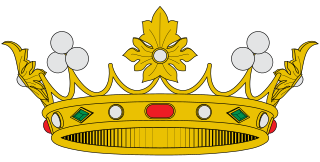
The Marquessate of Fontellas is a hereditary Spanish noble title granted by King Charles IV, along with the title Viscount of Amaláin, in favor of the 14th Lord of Fontellas, José Joaquín Vélaz de Medrano y Gante, 7th Viscount of Azpa, by Royal Dispatch on 19 April 1793. Its name refers to the municipality of Fontellas in the province of Navarre, which had been the lordship of the Peralta family from 1438 until the early XVI century when it passed to the Gante lineage and finally the Medrano lineage.

The Palace of Vélaz de Medrano is the former seat and residence of the noble Medrano family in Igúzquiza, Navarre. The palace was directly linked to the lordship of Igúzquiza, perpetually held by the Medrano family. The castle-palace of Vélaz de Medrano is currently privately owned and listed in the Spanish Historical Heritage, obtaining the protection of the generic declaration of the Spanish Historical Heritage decree on April 22, 1949, and protected by Law 16/1985 of June 25, 1985.

Jaime Vélaz de Medrano y Echauz was a nobleman from the House of Medrano, a Knight of Navarre, royal guard of King John III of Navarre, captain of the kings standing army, alcaide of the Castle of Maya and mayor of Amaiur-Maya. Medrano became one of the leading defenders of the Independent Navarrese crown against the Spanish conquest of Iberian Navarre. Jaime Vélaz de Medrano is believed to have served as the Alcaide of Maya Castle from 2 October 1521, to 19 July 1522.
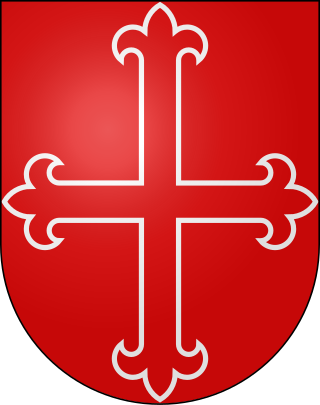
José Joaquín Vélaz de Medrano y Gante, 1st Marquess of Fontellas 1st Viscount of Amaláin, 7th Viscount of Azpa, Lieutenant of the Royal Spanish Guards during the reign of Charles III of Spain, 14th Lord of Fontellas, 21st Lord of Autol and Yerga, 13th Lord of Quel de Suso, 13th Lord of Ordoyo, and Lord of the Towns and Palaces of Mendillorri and Beúnzalarrea, the town of Amaláin, Lavaiz and Villanueva. He was a Knight of the Order of Malta, representative to the General Courts for the Military Branch, magistrate of Pamplona and a member of the Cortes of Navarre. Medrano was created 1st Viscount of Amaláin and the 1st Marquess of Fontellas by Royal decree on April 19, 1793, by Charles IV of Spain. He was born in Pamplona and died unmarried in Fontellas on 10 February 1826. His nephew Fernando Vélaz de Medrano y Alava succeeded him as the II Marquess of Fontellas.

The Viscounts of Azpa were the rulers of the Viscountcy of Azpa. The Viscountcy takes its name from the town of Azpa, a locality and council located in the municipality of Valle de Egüés, in Navarre province, Spain. The Viscountcy of Azpa was granted by Philip II of Spain in the mid-16th century to Don Alonso Vélaz de Medrano Navarra y Liédena, who served as a captain of cavalry under Fernando Álvarez de Toledo y Pimentel, the 3rd Duke of Alba de Tormes. The Viscounts of Azpa, who were descendants of Queen Joan II of Navarre and King Philip III of Évreux, were later granted the title Marquess of Fontellas.

Juan Vélaz de Medrano y Echauz was a high ranking nobleman and military leader in the final years of an independent Kingdom of Navarre. Head of the ancient House of Medrano in Navarre and the Vélaz de Medrano mayorazgo, he was the Lord of Igúzquiza, Aguinano, Orendain, Zabala, Arróniz, the 4th Lord of Learza and the maternal great-great-great-grandson of Queen Joan II of Navarre and King Philip III of Navarre. He was appointed merino of the merindad of Estella, and became the governor of the castles of Del Castillo, Santacara, Monjardin. Juan was the Major Knight of King John III of Navarre and Henry II of Navarre. He became a vassal of Charles V, Holy Roman Emperor after the Spanish conquest of Navarre. Juan was a significant representative of the Agramontese faction, rivals of the Beaumontese.


















